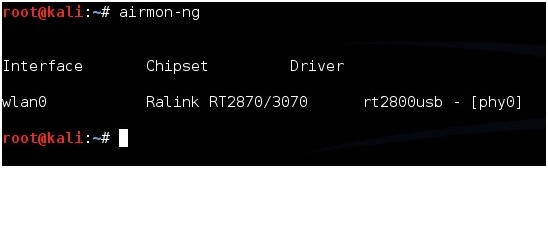

- OPEN TERMINAL WINDOW ON MAC MAC OS X
- OPEN TERMINAL WINDOW ON MAC INSTALL
- OPEN TERMINAL WINDOW ON MAC FULL
- OPEN TERMINAL WINDOW ON MAC CODE
- OPEN TERMINAL WINDOW ON MAC WINDOWS
There is a bug in 10.7 and 10.8 (but not in 10.9 or 10.6) where Finder ignores windows created after the last time focus was moved to another application and back when getting the insertion location property. Set p to POSIX path of (target of Finder window 1 as alias) If you use 10.7 or 10.8, change tell application "Finder" to set p to POSIX path of (insertion location as alias) to: tell application "Finder" running a command, displaying a man page, or running emacs. They reuse the frontmost tab if it is not busy, e.g.They use the folder on the title bar instead of requiring you to select a folder first.If you assign the New Terminal Tab at Folder service a keyboard shortcut, it doesn't work in column view. As of 10.9, there is a bug where services that receive folders as input are never listed in the services menu in column view.The first two scripts have a few advantages compared to the services added in 10.7: Tell (launch session "Default") of result to write text "cd " & quoted form of p Tell application "System Events" to keystroke "t" using command downĪlways create a new tab (iTerm 2): tell application "Finder" to set p to POSIX path of (insertion location as alias) Reuse an existing tab or create a new tab (Terminal): tell application "Finder" to set p to POSIX path of (insertion location as alias) If (exists window 1) and not busy of window 1 thenĭo script "cd " & quoted form of p in window 1 Reuse an existing tab or create a new window (Terminal): tell application "Finder" to set p to POSIX path of (insertion location as alias)

You could also assign a shortcut to a script like the ones below. You can change the icon in the Finder by following the instructions here (change the icon of the application you created with Automator).Ĭd "$(osascript -e 'tell app "Finder" to POSIX path of (insertion location as alias)')" Move the application to the Finder icons bar while holding ⌘ : Set _window to (create window with profile "Default")Ĭlick "File" -> "Export" to export as an. change directory in iTerm (version >= 3) The Docker menu displays the Docker Subscription Service Agreement window. Double-click Docker.app in the Applications folder to start Docker. Double-click Docker.dmg to open the installer, then drag the Docker icon to the Applications folder.
OPEN TERMINAL WINDOW ON MAC INSTALL
Set _cwd to quoted form of (POSIX path of (folder of the front window as alias)) Install and run Docker Desktop on Mac Install interactively.
OPEN TERMINAL WINDOW ON MAC CODE
Paste the code below: - get the current directory in Finder
OPEN TERMINAL WINDOW ON MAC FULL
Here's the full procedure to follow to create a shortcut in the Finder. Go back to the parent folder, select the relevant folder, then activate the service via the Services menu or context menu.įor those using iTerm, the AppleScript syntax has change in iTerm version 3. You cannot simply have the folder open and run the service "in place". Note: The New Terminal at Folder service will become active when you select a folder in Finder. If you drag onto a tab (rather than into the terminal view) it will execute a complete cd command to switch to that directory without any additional typing.Īs of OS X Mountain Lion 10.8, Command-Dragging into a terminal will also execute a complete cd command. In addition, you can now drag folders (and pathnames) onto the Terminal application icon to open a new terminal window, or onto a tab bar in a terminal window to create a new tab in that window. Look for "New Terminal at Folder" and "New Terminal Tab at Folder". You can enable these services with System Preferences > Keyboard > Keyboard Shortcuts > Services. They also work with absolute pathnames selected in text (in any application).
OPEN TERMINAL WINDOW ON MAC MAC OS X
This configuration profile installs the Documentation Terminal profile and sets it as the default Terminal profile.ĭ.settings.As of Mac OS X Lion 10.7, Terminal provides Services for opening a new terminal window or tab at the selected folder in Finder. Z3NWTlNOYW1lViRjbGFzcyNAMgAAAAAAABAQgAKAA1ZNb25hY2/SįxgZGlokY2xhc3NuYW1lWCRjbGFzc2VzVk5TRm9udKIZG1hOU09iĪmVjdAgRGiQpMjdJTFFTWF5nbnd+hY6QkpSboKu0u74AAAAAAAABĮ.40F1AB26-EAE7-4589-8101-72A4AC0C2015 YnBsaXN0MDDUAQIDBAUGBwpYJHZlcnNpb25ZJGFyY2hpdmVyVCR0ī3BYJG9iamVjdHMSAAGGoF8QD05TS2V5ZWRBcmNoaXZlctEICVRyī290gAGkCwwVFlUkbnVsbNQNDg8QERITFFZOU1NpemVYTlNmRmxh The reason why this is nice is that I can now add running these commands to a macOS configuration profile using the CommandString key:


 0 kommentar(er)
0 kommentar(er)
